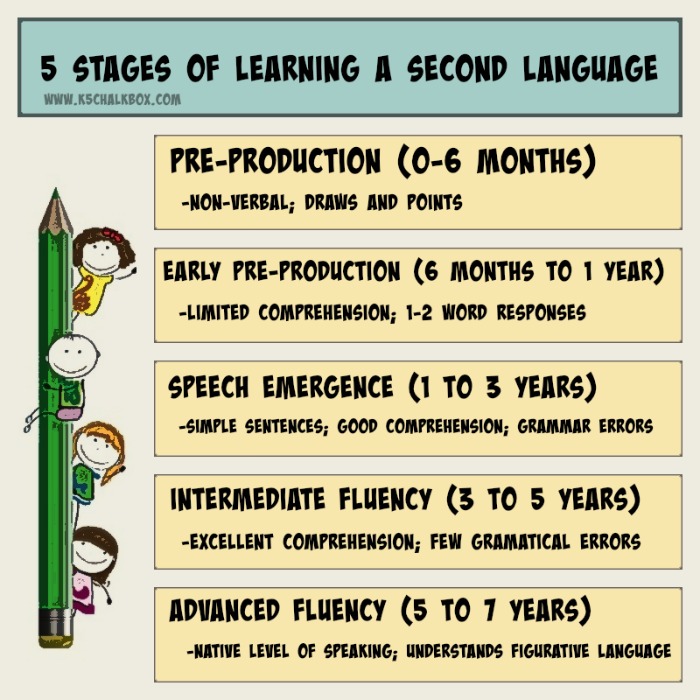What can teachers honestly expect from students who are learning a second language?
It’s really hard to know what to expect from students that you have trouble communicating with. However, I see it time and again – teachers expect students who have been learning English for a couple of years to perform at the level of their native English speaking peers.
- Some ELLs have strong background knowledge before coming to another country and may even have been above grade level in their native schools. These students will be able to quickly transfer knowledge into English and do well with little academic intervention.
- On the other hand, many of the ELLs arriving in our schools today come to us with extremely limited schooling.
- Students may be coming from war-torn areas, lived in refugee camps, or have lived in extremely remote locations.
- Some students are not literate in their native language and have little to no experience in a school setting.
- You may also have students who have lived in your country all of their lives, but they are in a household where English is not spoken as the primary language, therefore they have never mastered English or the language used at home.
So, what can teachers really expect a student to do at the different steps of learning a second language?
Stages of Learning a Second Language
Stephen Krashen and Tracy Terrell describe the natural stages of language acquisition in their book The Natural Approach. All students who learn English as a second language will pass through these stages, some more quickly than others.
The list below is excerpted from Classroom Instruction That Works with English Language Learners by Jane D. Hill and Kathleen M. Flynn.
It gives a comprehensive overview of the stages all students will pass through while learning a second language.
Pre-production: 0-6 Months
Characteristics
- minimal comprehension
- non-verbal
- nods head yes or no
- draws and points
Teacher Prompts
- Show me…
- Circle the…
- Where is…
- Who has….
Early Pre-production: 6 Months to 1 Year
Characteristics
- limited comprehension
- one or two word responses
- uses key words
- present-tense verb usage
Teacher Prompts
- Yes/No questions
- Either/or questions
- Lists & labels
- One or two word answers
Speech Emergence: 1 to 3 Years
Characteristics
- good comprehension
- simple sentences
- grammar and pronunciation errors
- misunderstands jokes/idioms
Teacher Prompts
- Why…?
- How…?
- Explain…
- Short phrase answers
Intermediate Fluency: 3 to 5 Years
Characteristics
- excellent comprehension
- few grammatical errors
Teacher Prompts
- What would happen if…
- Why do you think…
Advanced Fluency: 5 to 7 Years
Characteristics
- near native level of speaking
- no discernable grammatical or usage errors
- understands and uses figurative language
Teacher Prompts
- Decide if…
- Retell…
- Analyze…
- Support and defend…
SIOP for Teaching ESOL Students
The SIOP model (Sheltered Instruction Observation Protocol) is a system developed to ensure high quality instruction for English learners in content area teaching.
It allows both concepts and academic vocabulary to be developed in a way that bridges gaps in learning due to language acquisition.
This protocol is particularly important for students who are at the initial stages of English language fluency, although all can benefit.
In sheltered instruction, teachers must purposefully speak clearly, utilize visuals and manipulatives, and avoid the overuse of idiomatic phrases. Other things a teacher can do are:
- Use photos, pictures and drawings
- Body movements and pantomime
- Facial expressions and hand gestures
- Short simple sentences
- Make eye contact
- Use high-frequency words
- Support vocabulary development with realia
- More description through the use of synonyms
- Give detailed previews of prior content
- Use sentence frames to support learning
The SIOP protocol works extremely well for learning disabled students too.
This is not to equate second language learners as having a disability. The strategies are simply equally effective for a variety of students.
